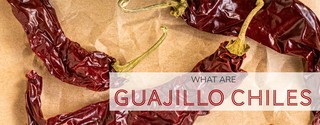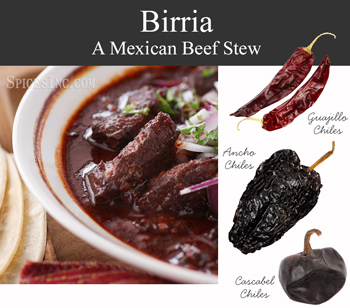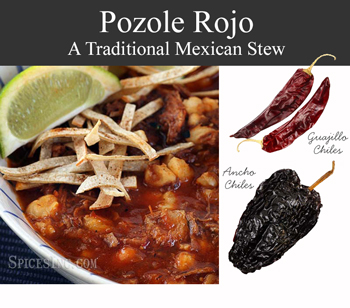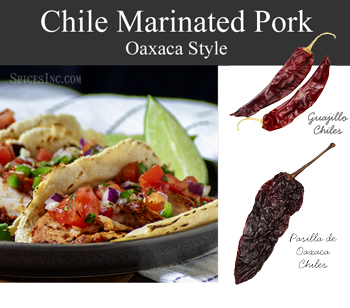What Are Guajillo Chiles?
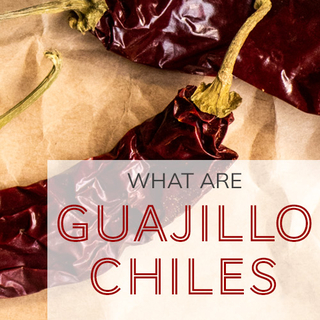
What Are Guajillo Chiles
Guajillo chiles are the second-most used chile in Mexican cuisine. They are one of the famous "holy trinity" of chiles used in Mexican moles, along with Ancho and Pasilla chiles.
This chile is used more for its flavor than its heat. However, if you like your chiles on the slightly sweeter side, you will find the chile Guajillo an excellent pepper to experiment with in your kitchen.
You are most likely here because you have heard about Guajillo chiles but are not sure if these are the right chiles for you. We’re here to help. We’ve been sourcing, processing, and selling Mexican dried chiles for more than ten years. This is the third most popular selling chile to our Mexican restaurant customers.
We know Guajillo peppers and in this guide, you will find all you need to know. You will figure out when and how to use them, where to find them, what to look for when buying, and the difference between Guajillos and other chile peppers.
Table of Contents
How Long Do Dried Guajillo Peppers Last?
All About Guajillo Chiles
Guajillo chiles, Capsicum annuum, are also referred to as dried Mirasol chile or Mirasol chiles when they are fresh.
Guajillo chiles look very similar and are most likely related to the harder-to-find Puya chiles. However, Puyas are smaller and pack more heat, measuring 5,000 to 8,000 SHU. Chefs of authentic Mexican cuisine, when looking for an unexpected kick, use Puya chiles in place of Guajillo chiles.
Unlike some Mexican dried chiles that are bred for their heat, Guajillos are bred for flavor. These chiles are slightly fruity with a sweet heat, tannic with a hint of pine, tart berries, and light smoky undertones.
Mirasol chiles are native to central and northern Mexico and today are predominantly grown in the states of Aguascalientes, Durango, and Zacatecas1.
What Do They Look Like?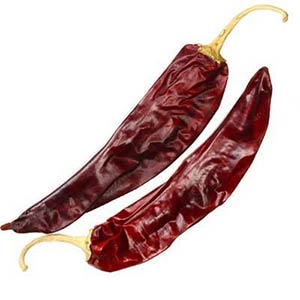
Guajillo chiles have leathery skin and a dark reddish-brown color. This dried pepper is about 1" wide and 3-6" long with an elongated shape that tapers to a point. The best quality Guajillo chiles will have shiny, smooth skin that is still pliable. Pliability indicates freshness. Older Guajillo chiles will look dusty and will crack when bent.
| Ingredients | Guajillo chiles |
| Also Called | Dried mirasol chile, chile guajillo |
| Recommended Uses | Guajillo chilies are used in enchiladas, moles, salsas, sauces, soups, stews, and tamales |
| Flavor Profile | Slightly fruity with a sweet heat, tannic with a hint of pine, tart berries, and light smoky undertones |
| Scoville Heat Units | 2,500 to 5,000 SHU |
| Species | Capsicum annuum |
| Cuisine | Mexican |
| How to Store | Airtight container in a cool, dark place |
| Shelf Life | 1-2 Years |
| Country of Origin | Mexico |
| Dietary Preferences | Gluten-Free, Kosher, Non-GMO |
Guajillo Chile Flavor
Guajillo chiles taste fruity with a sweet heat. They are tannic with pine, have hints of tart berries hints and offer light, smoky undertones.
Guajillo chiles are left on the plant to ripen before being harvested entirely. As the chile ripens, the flavor compounds and sugars are allowed to develop fully. When the peppers have dried, the flavors of the mature chile become more concentrated, creating loads of nuance in the dried product.
How Hot Are They?
Guajillo chiles has a heat level of 2,500 to 5,000 SHU, depending on that year’s growing season. We consider this to be a medium heat pepper.
Heat levels are fluid in peppers and can cover an extensive range of SHU, even among individual varieties. A rainy growing season produces milder peppers, while a dry season makes them hotter.
How Hot Are Guajillo Chiles Compared to Jalapenos?
Guajillo chiles have a SHU of 2,500 to 5,000. They are not quite as spicy as a jalapeno pepper, which has a Scoville heat rating of 2,500 to 10,000 SHU.
Heat levels in Guajillo peppers can vary even from plant to plant in the same field, depending on the differences in the seeds used. A rainy growing season produces milder peppers, while a dry season makes them hotter.
Using Guajillo Chiles
Guajillo chiles are usually combined with Ancho chiles and Pasilla chiles to make Mexican sauces and stews. It is typically used in pastes or rubs to flavor all meats, especially chicken. In addition to authentic moles, use this chile in enchiladas, salsas, sauces, soups, stews, and tamales.
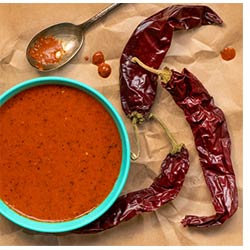 In Mexico, dried Guajillo chiles are often toasted in a dry, hot pan to release their sweet flavor and heat before adding other ingredients. To toast them, heat a pan to medium-hot. Place the chiles in the pan and toast them for about 15 to 60 seconds per side until they become fragrant. Do not let them burn, or they will develop an acrid taste. Once toasted, they're ready to be used in any recipe that calls for them.
In Mexico, dried Guajillo chiles are often toasted in a dry, hot pan to release their sweet flavor and heat before adding other ingredients. To toast them, heat a pan to medium-hot. Place the chiles in the pan and toast them for about 15 to 60 seconds per side until they become fragrant. Do not let them burn, or they will develop an acrid taste. Once toasted, they're ready to be used in any recipe that calls for them.
You can make a Guajillo chile puree by splitting and seeding the dried fruit, soaking the skins for about 15-20 minutes, and smashing it into a thin paste. Cook the puree with garlic, Mexican oregano, pepper, cumin, chicken stock, and olive oil to produce a thick, red, flavorful sauce.
Guajillo's unique flavor makes it fun to experiment with, particularly with things like sweet sauces and fruits. It can be sprinkled on decadent desserts when ground into a powder for an extra kick. Guajillo chiles pair very well with chocolate.
Rehydrating Guajillo Chiles
Because of its thick skin, the Guajillo chiles require a longer soaking time to rehydrate than most other Mexican dried chiles.
There are two ways to rehydrate dried Guajillo chiles. The fastest and easiest way is to remove the stems, place the peppers in a bowl, pour boiling water over them and let them steep for 15-20 minutes. Then, drain the water, and you are ready to go.
We like to use a more extended method for better flavor.
- Rinse the dried chiles well and pat dry.
- Remove the stems.
- Take a knife and slice the length of the chile pepper and remove the seeds and any membrane. The seeds add bitterness. Removing the seeds and membrane may be easier to do with rehydrated chiles.
- Heat a large skillet to medium-high heat and dry roast the peppers for 15-60 seconds per side by lightly pressing them into the pan with a spatula. Giving the dried peppers this quick toasting brings out some hidden flavors. The peppers will become very fragrant and will plump up a little. Be careful not to burn the chiles, or they become bitter. This step is not necessary but does add additional flavor.
- Set the lightly roasted peppers into a large mixing bowl and pour boiling water over them. Use just enough water to cover the peppers. If the peppers float to the surface, weigh them down with a small bowl to keep them fully submerged.
- Cover and allow to sit 15-30 minutes, depending on the thickness of your peppers.
- Remove from water and use as needed.
Some people like to use the leftover soaking liquid for dishes that need some additional moisture. Others find the soaking liquid too bitter and prefer to use a beef, chicken, or vegetable stock instead. Once cooled, taste the liquid and judge for yourself.
How Long Do Dried Guajillo Peppers Last?
Dried Guajillo chiles typically last 1-2 years after being purchased if stored properly. Store them in an airtight container in the pantry or cupboard to maximize their shelf life. Keep them away from direct sunlight, and do not store them in cabinets above or around your stove. Moisture from the stove can absorb into the dried chile, causing the chile to rehydrate partially. Even a little added moisture can cause mold to grow and dramatically shorten the shelf life.
Some sources say that a dried chile pepper can last five years. These sources are not in the chile supply business. Others will tell 3-4 years. While we've seen some chiles go this long, it is only under ideal holding scenarios.
Dried Guajillo peppers have a shelf-life, but they are not like a carton of milk in your fridge with a determined use-by date. Instead, the shelf life for Guajillo chiles is determined by how flavorful they are to use in cooking.
You may have an old chile in your pantry, but that does not mean it can't be used or has lost all flavor. Break off a small piece from the chile and crush it in your hand, using gloves if it is a hotter chile. Smell the chile. Does it still have a strong aroma, or is it faint or nonexistent? If it's hard to detect any scent, it's time to get newer dried peppers. If it still smells savory and appealing, you can use your pepper.
Whole dried Guajillo chiles have a longer shelf life than Guajillo chile flakes or Guajillo chile powder. They last longer because, with whole chile pods, there is less surface area exposed to the air. When in the flake or ground form, more surface area of the chile becomes exposed to air. They are causing the volatile oils in the peppers to dissipate, which will cause the flavor in the pepper to degrade.
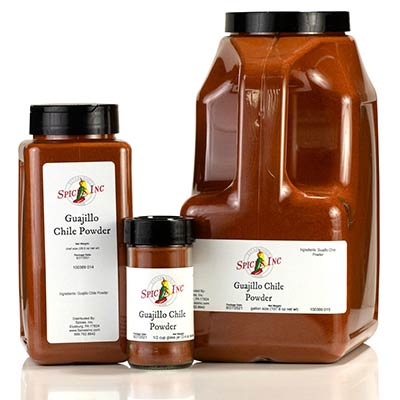
|
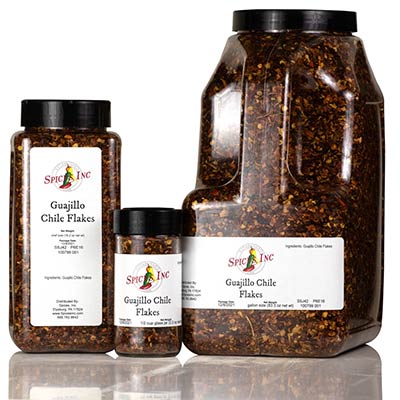
|
Freezing Guajillo Chiles
You can freeze your dried Guajillo chiles using a vacuum sealer and a freezer bag. Be sure to remove as much air as possible before freezing. If you decide this is how you want to store your chiles, we recommend that you are mindful of how many chiles you place in each bag. Only hold as much in a bag as you anticipate using for one recipe. You do not want to refreeze or store thawed extra chiles in the fridge, as your dried chiles will pick up some moisture in the thawing process, which will diminish their quality.
What Can I Use Instead of Guajillo Chiles?
When looking for a substitute for Guajillo chiles, you need to know if you are looking more to replace flavor or heat. The Guajillo chile has a heat level of 2,500-5,000 SHU. The flavor is slightly fruity with a sweet heat, tannic with a hint of pine, tart berries, and light smoky undertones.
The Pasilla Negro is the closest flavor match, although it is not as hot. The Pasilla Negro chile is aromatic and tangy with chocolate and raisin notes, a rich flavor, and woodsy undertones. Heat is 1,000 - 2,000 SHU.
Our second choice would be the easier-to-find Ancho chiles, with their mild, fruity flavor. They have undertones of plum, raisin, and tobacco and slightly earthy bitterness. Heat is also gentle, at 1,000 - 1,500 SHU.
Next would be the Cascabel, a favorite of many Mexican chefs. Cascabels are nutty, with undertones of smoke and tobacco. Heat is 1,000 - 2,500 SHU.
The final choice would be the harder-to-find but closely related Puya chile. It has a light and fruity flavor profile with licorice and cherry undertones. Puya chile is the hottest of the four suggested substitutes, at 5,000 - 10,000 SHU.

Where to Buy Guajillo Chiles
You essentially have three choices when buying any dried chiles, including Guajillo peppers. You can shop in specialty markets, online, or in grocery stores and all have their plusses and minuses.
Specialty Mexican markets are a great choice, especially if a small family-run business. They know their stuff, and you're likely to find a good quality dried chile. The downsides are that they may not be rotating the oldest chiles to the front, so you can't be sure of the age of the product you're purchasing. And their smaller size often means that their buying power won't be excellent.
Online suppliers are a good choice if you can find one you trust. Their selections can be pretty robust, thanks to a variety of products from established suppliers. Pricing tends to be reasonable, although shipping costs can get expensive. If the online vendor moves a lot of products, they tend to be very knowledgeable about their dried chiles and have systems to remove inferior chiles before shipping. The biggest negative with them is that you can't touch and feel the chiles before buying.
Grocery stores are an option, and they might have decent pricing if you're at a large enough chain, but they come with some notable downsides. Like the specialty markets, stock rotation can be an issue, and again, you often can't be sure of the age of the product in your cart. Their more significant challenge is their lack of expertise throughout their store distribution supply chain. As a result, you might not be buying what you think you are buying. Simply put – they don't know chiles.
References
- Dewitt, D. (1999). The Chile Pepper Encyclopedia: Everything You'll Ever Need To Know About Hot Peppers, With More Than 100 Recipes (1st ed.). William Morrow Cookbooks.

